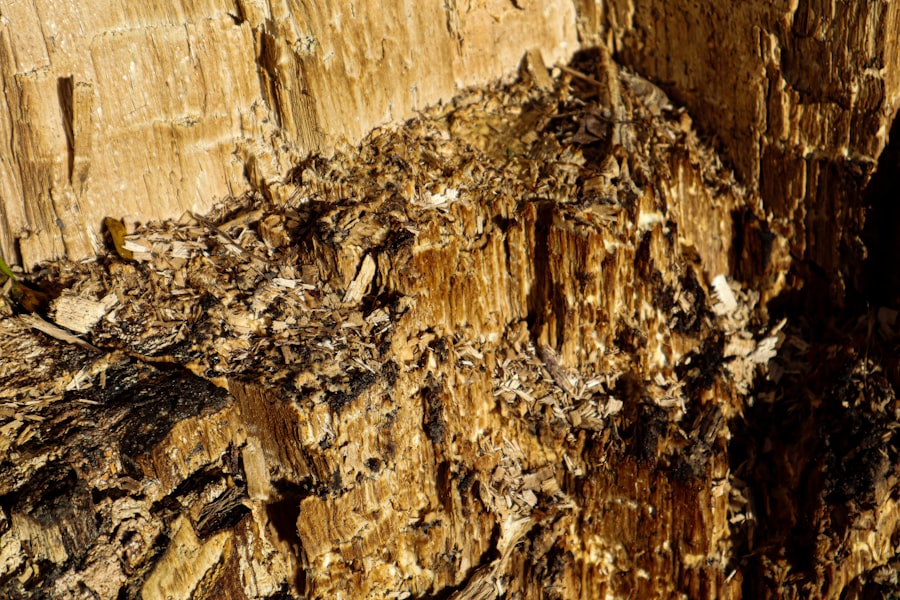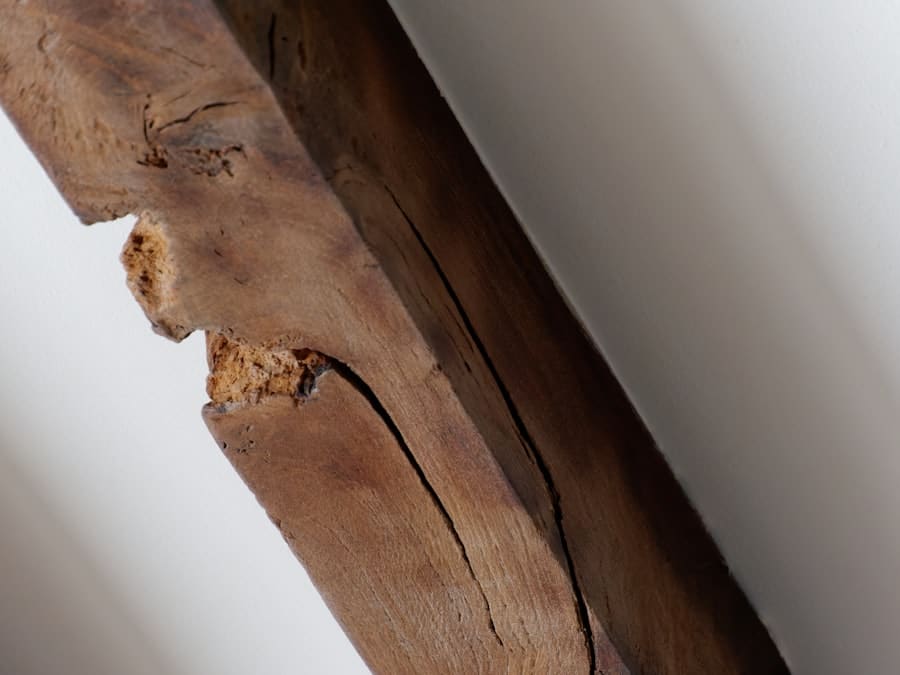Termites are often referred to as “silent destroyers” for a good reason. They can cause significant damage to your home and property without you even realizing it until it’s too late. These small insects thrive on cellulose, a component found in wood, paper, and other plant materials.
As a homeowner, it’s crucial for you to understand the threat they pose. Termites can compromise the structural integrity of your home, leading to costly repairs and potential safety hazards. Their presence is not just a nuisance; it can be a serious financial burden if left unchecked.
The most common types of termites include subterranean, drywood, and dampwood termites, each with its own unique behaviors and habitats. Subterranean termites, for instance, live underground and can create extensive colonies that invade homes from below. Drywood termites, on the other hand, infest the wood within your home, often going unnoticed until significant damage has occurred.
By familiarizing yourself with these pests and their habits, you can better prepare yourself to protect your home from their destructive tendencies.
Key Takeaways
- Termites can cause significant damage to homes and buildings, making it important to understand the threat they pose.
- The cost of termite prevention may seem high, but it is much lower than the potential cost of repairing termite damage.
- Termite infestation can lead to structural damage and compromise the safety of a building.
- Termite prevention can save money in the long run by avoiding costly repairs and structural damage.
- There are various methods of termite prevention, including chemical barriers, baiting systems, and physical barriers.
The Cost of Termite Prevention
The Cost of Prevention
The initial costs of termite prevention methods can vary widely depending on the size of your home, the level of infestation risk in your area, and the specific prevention strategies you choose.
Long-term Savings
You might find that spending a few hundred dollars on preventive measures is far more economical than facing thousands in repairs due to termite damage. Moreover, the cost of termite prevention should be viewed in the context of long-term savings. Regular inspections and treatments can help you avoid the catastrophic expenses associated with repairing structural damage caused by termites.
Securing Your Investment
By budgeting for termite prevention as part of your home maintenance routine, you can ensure that your investment in your property remains secure and intact.
The Risks of Termite Infestation

The risks associated with termite infestation extend beyond mere property damage. When termites invade your home, they can compromise its structural integrity, leading to safety concerns for you and your family. Imagine discovering that the beams supporting your living room are weakened due to termite activity; this scenario is not just alarming but also potentially dangerous.
The longer you allow termites to thrive undetected, the greater the risk becomes. Additionally, termite infestations can lead to increased stress and anxiety for homeowners. The thought of dealing with an infestation can be overwhelming, especially when considering the potential costs and repairs involved.
You may find yourself constantly worrying about whether your home is at risk or if you’ve missed any signs of an infestation. This mental burden can take a toll on your overall well-being, making it essential to prioritize prevention and peace of mind.
The Benefits of Termite Prevention
Investing in termite prevention offers numerous benefits that go beyond simply protecting your home from damage. One of the most significant advantages is the peace of mind that comes with knowing your property is safeguarded against these destructive pests. By taking proactive measures, you can rest easy knowing that you’ve done everything possible to protect your investment.
Furthermore, effective termite prevention can enhance the overall value of your home. Potential buyers are often wary of properties with a history of pest issues, including termites. By demonstrating that you have taken steps to prevent infestations, you not only protect your current living situation but also increase your home’s marketability should you decide to sell in the future.
This proactive approach can make a significant difference in how potential buyers perceive your property.
Types of Termite Prevention Methods
There are several methods available for termite prevention, each with its own advantages and disadvantages. Chemical treatments are among the most common approaches, involving the application of pesticides around the perimeter of your home to create a barrier against termites. These treatments can be highly effective but may require reapplication over time to maintain their efficacy.
Physical barriers are another option for preventing termite infestations. This method involves using materials such as steel mesh or concrete to block access points for termites. While this approach can be effective during construction or renovation, it may not be practical for existing homes without significant modifications.
Additionally, baiting systems are gaining popularity as a more environmentally friendly option. These systems attract termites to bait stations filled with slow-acting insecticides, ultimately eliminating entire colonies over time.
DIY vs Professional Termite Prevention

DIY Methods: Weighing the Pros and Cons
DIY approaches can be appealing due to their lower upfront costs and the sense of accomplishment that comes from tackling home maintenance tasks yourself. However, it’s essential to recognize that effective termite prevention often requires specialized knowledge and tools that you may not possess.
The Benefits of Professional Pest Control Services
On the other hand, professional pest control services bring expertise and experience to the table. Trained technicians can accurately assess your property for signs of termites and recommend tailored prevention strategies based on their findings.
Long-Term Cost Savings
While hiring professionals may involve higher initial costs, their ability to provide comprehensive solutions can ultimately save you money by preventing infestations before they start.
Long-Term Cost Savings of Termite Prevention
One of the most compelling arguments for investing in termite prevention is the long-term cost savings it offers. While the initial investment may seem daunting, consider the potential expenses associated with repairing termite damage. Structural repairs can run into thousands of dollars, not to mention the costs associated with restoring your home’s aesthetic appeal after an infestation.
By prioritizing prevention, you can avoid these costly repairs altogether. Regular inspections and treatments can help catch any signs of termite activity early on, allowing for prompt action before significant damage occurs. In this way, investing in termite prevention is not just about protecting your home; it’s about safeguarding your financial future as well.
Environmental Impact of Termite Prevention
As you consider various termite prevention methods, it’s essential to think about their environmental impact. Traditional chemical treatments often raise concerns about their effects on local ecosystems and non-target species. However, many companies now offer eco-friendly alternatives that minimize harm while still effectively deterring termites.
By choosing environmentally responsible methods for termite prevention, you not only protect your home but also contribute to the health of your community and surroundings. This approach aligns with a growing awareness of sustainability and responsible pest management practices that prioritize both human safety and environmental stewardship.
Insurance and Termite Prevention
Understanding how insurance relates to termite prevention is crucial for homeowners like yourself. Many standard homeowner’s insurance policies do not cover damage caused by termites, as infestations are often considered preventable through proper maintenance and care. This means that if termites do invade your home and cause damage, you may be left footing the bill entirely.
To mitigate this risk, consider discussing termite prevention with your insurance agent. Some insurers offer discounts or incentives for homeowners who take proactive measures against pests like termites. By demonstrating that you have implemented effective prevention strategies, you may not only protect your home but also potentially lower your insurance premiums.
Signs of a Termite Infestation
Being able to identify the signs of a termite infestation is vital for any homeowner concerned about these pests. Common indicators include mud tubes along walls or foundations, discarded wings near windows or doors, and hollow-sounding wood when tapped. If you notice any of these signs in your home, it’s crucial to act quickly by contacting a pest control professional for an assessment.
Additionally, regular inspections can help catch infestations before they escalate into more significant problems. By staying vigilant and aware of potential warning signs, you empower yourself to take action early on and protect your home from costly damage.
Is Termite Prevention Worth the Investment?
In conclusion, investing in termite prevention is undoubtedly worth it for homeowners who wish to protect their properties from these destructive pests. The potential costs associated with repairs far outweigh the initial expenses involved in preventive measures. By understanding the risks posed by termites and recognizing the benefits of proactive strategies, you position yourself as a responsible homeowner committed to safeguarding your investment.
Ultimately, whether you choose DIY methods or professional services, prioritizing termite prevention will provide peace of mind and long-term savings while contributing positively to your home’s value and safety. As you navigate this important aspect of homeownership, remember that taking action now can save you from significant headaches down the road.
Is Termite Prevention Worth the Money? explores the cost-benefit analysis of investing in termite prevention measures for your home. For those looking for the best pest control service in Milwaukee, Wisconsin, Thrift Pest Control offers top-notch solutions to keep your home termite-free. With their expertise and experience, homeowners can rest assured that their investment in termite prevention is well worth the money.
FAQs
What are termites?
Termites are small, wood-eating insects that can cause significant damage to wooden structures and furniture.
Why is termite prevention important?
Termite prevention is important because termites can cause extensive damage to homes and other wooden structures, leading to costly repairs.
What are some common termite prevention methods?
Common termite prevention methods include keeping wood away from the foundation of the home, reducing moisture in and around the home, and using termite-resistant materials during construction.
Is termite prevention worth the money?
Termite prevention can save homeowners money in the long run by preventing costly damage to their homes. Investing in termite prevention measures can help avoid the need for expensive repairs.
How much does termite prevention cost?
The cost of termite prevention can vary depending on the method used and the size of the home. It is important to consider the potential cost of termite damage when evaluating the value of termite prevention.
Are there any natural termite prevention methods?
Some natural termite prevention methods include using cedar or cypress wood, maintaining proper ventilation and drainage around the home, and using nematodes or certain plants to deter termites.
